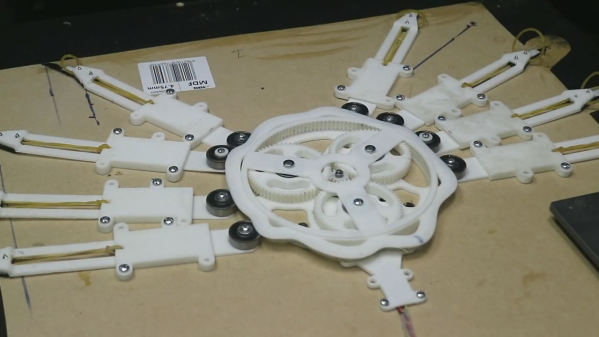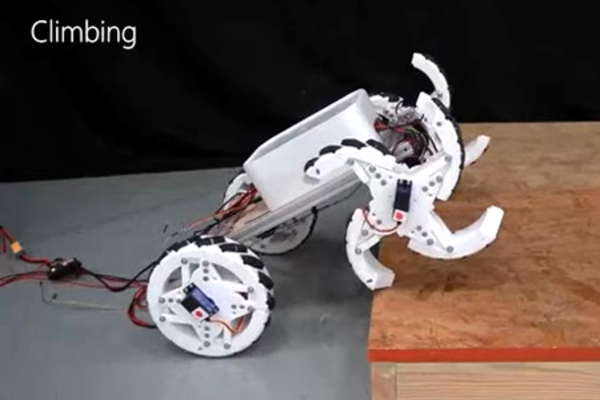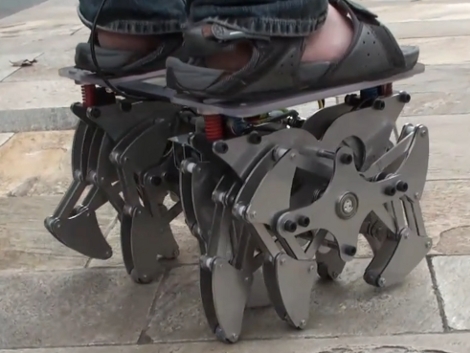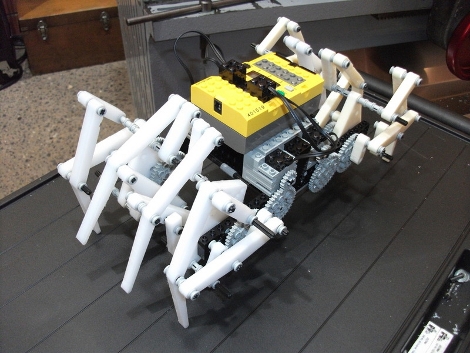[Jason Winfield] shared with us a video describing a project with a lot of personality: a mounted, lit, and quivering Alien facehugger triggered by motion. The end result is a delightful jump scare, and the Raspberry Pi that controls everything also captures people’s reactions.
It starts with a little twitch when motion is sensed, then launches into a perfectly unsettling quiver combined with light and sound. We particularly like the wave-like effect from the LED lighting, which calls to mind illumination from rotating hazard beacons.

One challenge was how to efficiently move the legs. Rather than use a motor for each limb, [Jason] settled on a single motor driving a rotating cam arrangement. You can see the results for yourself in the video below, but getting there was not simple.
The surplus motor [Jason] chose is thin and high-torque, but runs extremely fast. Since he wanted the legs to quiver creepily rather than vibrate, something needed to be done to mitigate this.
The solution is a planetary gear assembly that drives a rotating ring and cam arrangement coupled to the facehugger’s legs. There’s only one motor, but the effect is that each leg’s motion is independent of the others. The whole assembly is quite slim, and everything is contained within the frame.
Facehuggers and gear assemblies are not exactly an everyday combination, but believe it or not this isn’t the first time the two have joined forces. Check out the Aliens-themed cuckoo clock, complete with crew member torso and emerging chestburster!



 By now you’d think we’ve seen just about every means of robotic actuator possible. We have Cartesian bots, Stewart platforms, SCARA bots, Delta bots, and even
By now you’d think we’ve seen just about every means of robotic actuator possible. We have Cartesian bots, Stewart platforms, SCARA bots, Delta bots, and even 










